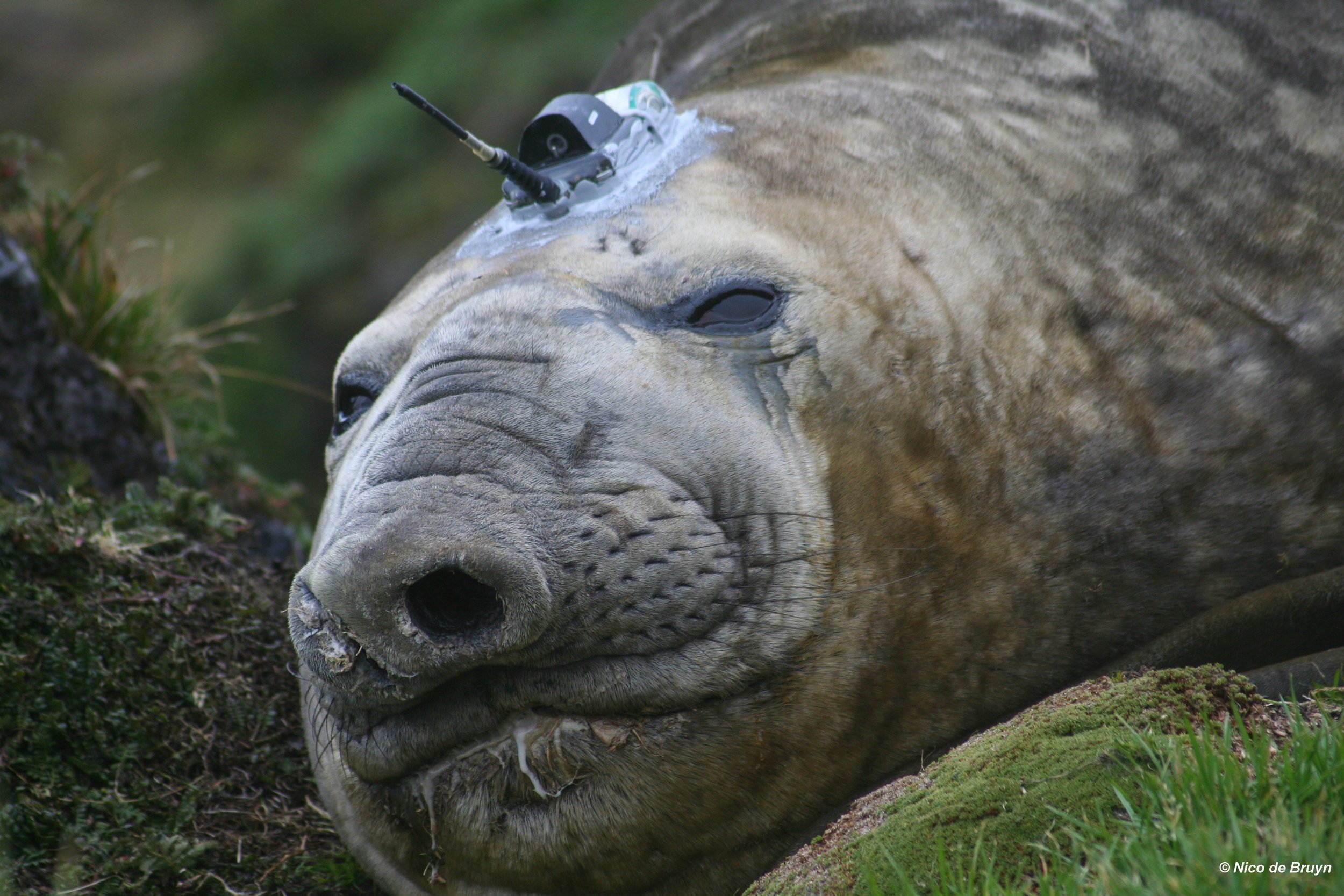NEW PAPER: Stable isotope analysis reveals the ecology of a dominant prey species around the Prince Edward Islands
/The foraging patterns of marine predators largely depend on the ecology and distribution of their prey. However, little information is available for the mid-trophic levels (including fish and squid) from the marine systems around the Prince Edward Islands.
New research published in Marine Ecology Progress Series by MIMMP MSc student Andre van Tonder and colleagues entitled “Ecology of Moroteuthopsis longimana at the sub-Antarctic Prince Edward Islands, revealed through stable isotope analysis of squid beaks” investigates the ecology of the giant warty squid, Moroteuthopsis longimana, which is eaten by many bird species and marine mammals in the Southern Ocean.
Fig. 2. from Van Tonder et al. (2021) showing the sampling technique for the stable isotope analysis of squid beaks from grey-headed albatross nests on marion island
Squids beaks are identifiable to species level and also act as archives of chemical information, with stable isotope ratios of carbon and nitrogen accrued throughout the squid’s lifetime. This stable isotope archive not only provides insights to the ecology of the squid, but also allows us to establish links with its enigmatic marine predators. The stable isotope ratio of carbon gives a broad idea of the latitudinal distribution of the squid, and the stable nitrogen isotope ratio provides information on the relative position in the food chain that the squid occupies.
Fig. 3. Overall isotopic niche, plotted as beak δ15N values over δ13C values, of Moroteuthopsis longimana eaten by albatrosses breeding at the Prince Edward Islands (blue), Îles Crozet (green) and Îles Kerguelen (red). The lighter dashed outlines represent the convex hulls (total area, TA) and the bold ellipses represent the standard ellipse areas corrected for the populations (SEAc). AZ: Antarctic Zone; SAZ: Sub-Antarctic Zone; STZ: Subtropical Zone (Van Tonder et al. 2021)
This study used naturally regurgitated squid beaks from around grey-headed albatross nests on Marion Island, and found that these albatross were foraging at the Southwest Indian Ridge rather than making use of broader foraging zones as seen in albatross from the neighbouring Îles Crozet (~1000 km east) and the more distant Îles Kerguelen (~2400 km east) (Fig. 3). Interestingly, the study found scant evidence of the grey-headed albatross feeding on squid closer to their breeding grounds around the Prince Edward Islands, which sparked intrigue: is it due to low densities of squid or increased competition with other species for this prey?
The diet of the squid showed a dependence on crustaceans, although fish and other squid are also likely included.
Well done to Andre and colleagues for this paper which lays the groundwork for estimating the contribution of Moroteuthopsis longimana to the diet of marine predators! The isotopic values reported here are likely to act as potential source values for future research into the diet of marine mammal predators, which also depend on this squid species as a prey source.
Read more and access the article HERE.



















